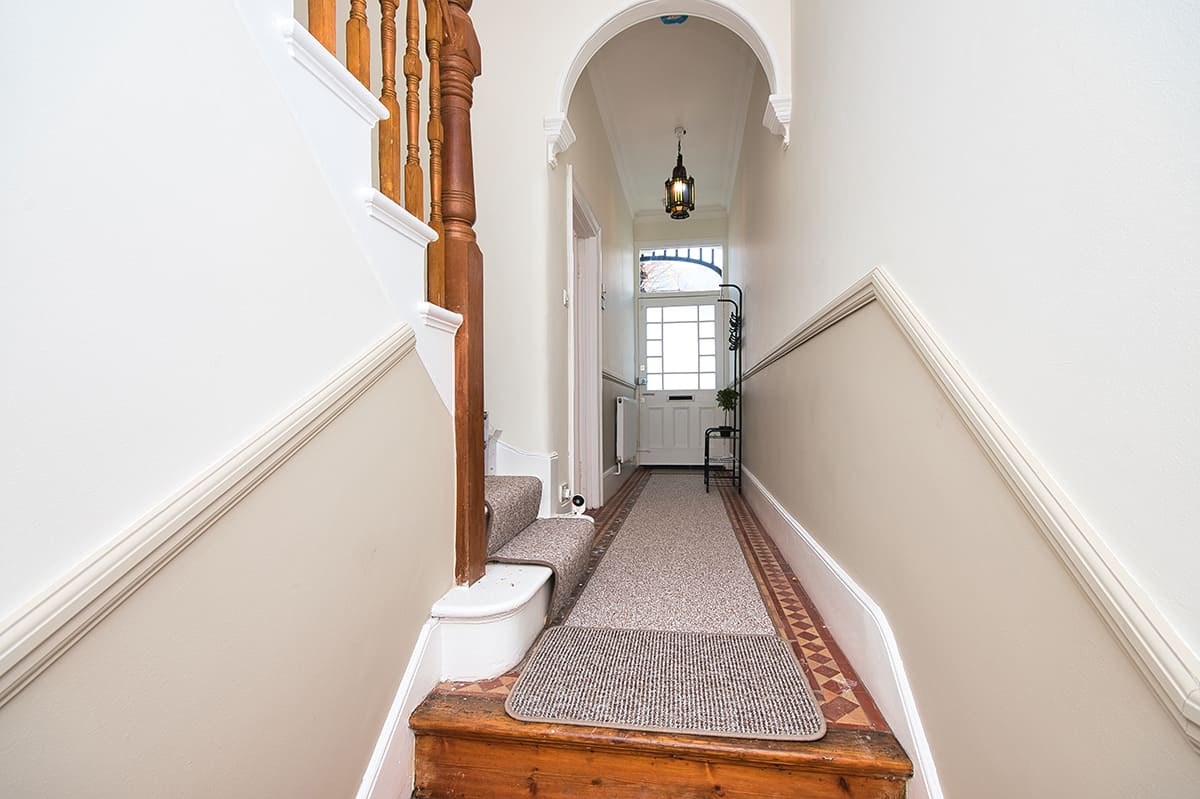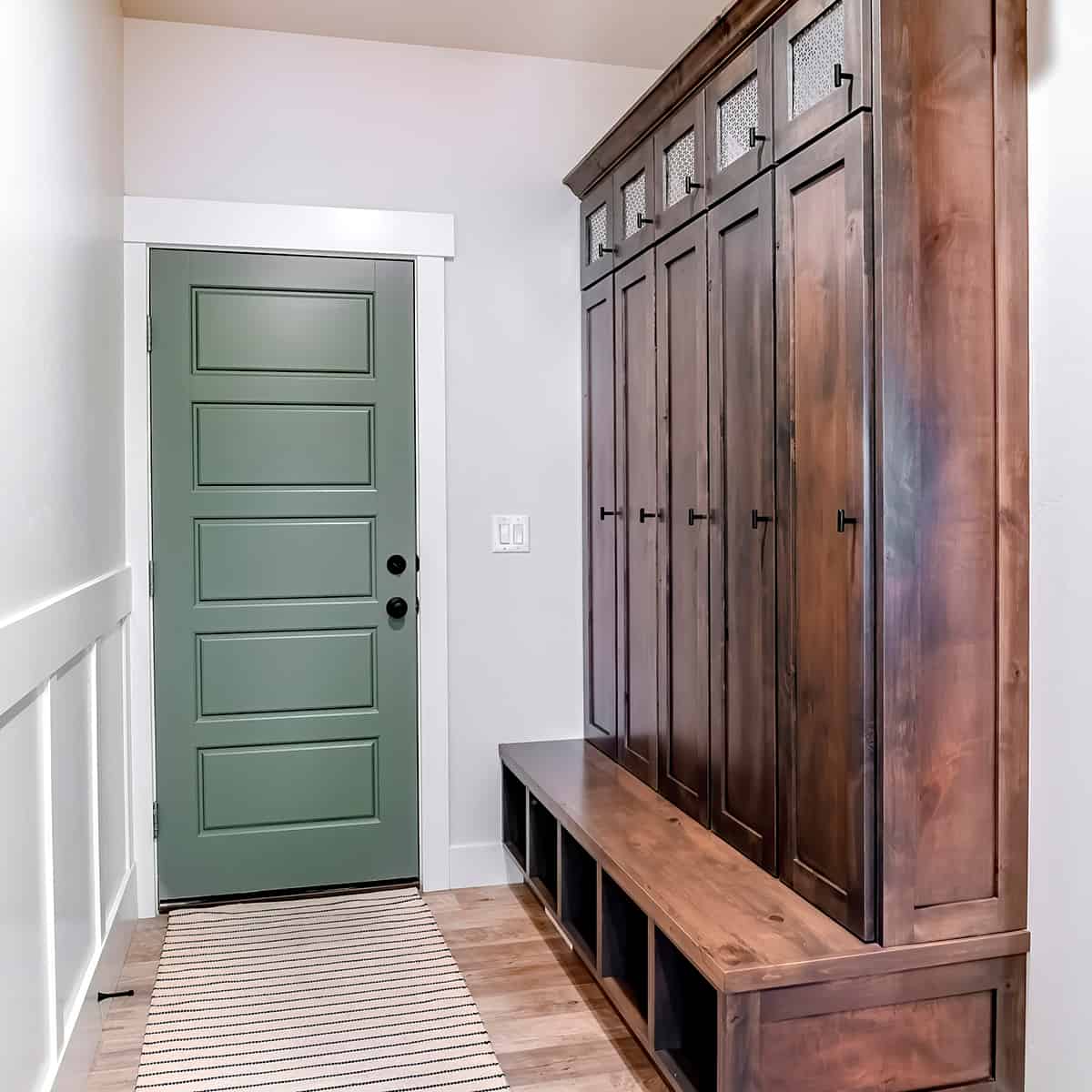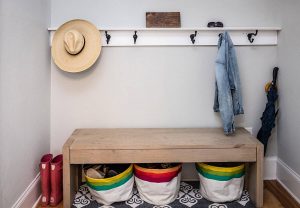If you’re fortunate enough to have a large hallway, then you might want to consider investing in a hallway runner. Not only can a hallway runner create a smart style at the entrance of your home, but it will also protect your hallway floor from damage when people are coming in and out of the home.
Hallway runners typically come in two width sizes of 2 and 3 feet, and they come in a range of lengths ranging from 5 feet to 14 feet. Here, we explore the various standard hallway runner dimensions and explain how to measure for a hallway runner.
Average Hallway Runner Size
Hallway runner rugs come in a range of standard sizes to suit a variety of hallways with different proportions. The average hallway runner will have a length of between 5 feet and 14 feet and a width of between 2 feet and 3 feet.
If you have an extra long hallway and need a runner that exceeds 14 feet in length, you may need to have a custom runner made, or you can use two runners in a long hall.
Standard Runner Rug Sizes
Runner rugs typically come in the following standard sizes:
2 feet width runner sizes
You can typically find many runner sizes with 2 feet in width, including 2 feet x 5 feet, 2 feet x 6 feet, 2 feet x 7 feet, 2 feet x 8 feet, 2 feet x 9 feet, 2 feet x 10 feet, 2 feet x 11 feet, 2 feet x 12 feet, 2 feet x 13 feet, 2 feet x 14 feet
3 feet width runner sizes
Here are some runner sizes with 3 feet in width: 3 feet x 6 feet, 3 feet x 6 feet, 3 feet x 7 feet, 3 feet x 8 feet, 3 feet x 9 feet, 3 feet x 10 feet, 3 feet x 11 feet, 3 feet x 12 feet, 3 feet x 13 feet, 3 feet x 14 feet
How to Measure Hallway for a Runner
Hallway runners come in a range of sizes, so you can find one to fit the floor space in your hallway. The point of a runner is not just to create a soft look and add decoration to the room, but predominantly it is to protect the hallway floor from heavy foot traffic. Since hallways are subjected to a lot of foot traffic, they are an area in the home that is likely to sustain wear and tear.
A hallway runner can protect the floor from this, so with this in mind, you should choose a runner that covers the majority of the hallway floor.
Most runners come in width measurements of 2 feet and 3 feet, which work well with the common width of hallways, which are usually 3 feet or 4 feet wide.
The preferred size of the hallway runner will be between 4 and 8 inches between the edge of the runner and the hallway wall. A distance of around 5 inches is ideal. To understand how wide your runner should be, take the width measurement of the hallway from one side wall to the other side wall and subtract 10 inches from this number. For example, if your hallway width measurement is 46 inches, then after subtracting 10 you will have 36 inches.
This means your ideal hallway runner will have a width measurement of 36 inches or 3 feet. If the number you get after measuring the width is not a standard runner size, for example, if your hallway has a width of 50 inches, and therefore you want a hallway runner with a width measurement of 40 inches, then you have the option of having a custom size runner made for you, or you can choose the nearest available size.
A 36-inch wide rug would still look good in a hallway that measures 50 inches wide because the gaps on either side will still fall between 4 and 8 inches.
The length measurement of a hallway should be measured in the same way. You should allow between 4 and 8 inches of floor space between the end walls and the runner.
If there is no doorway at the end of your hall, for example, if your hallway opens into another room without a door, draw an imaginary line across the floor where a door would go, and use this to measure up to. Follow the same measuring method to settle on the length of the runner as you did with the width.
Take the length measurement of the hallway, subtract 10, and then choose a length of runner closest to that size. Standard hallway runner rugs come in lengths ranging from 5 feet in length up to 14 feet in length.
If your hallway length exceeds 14 feet, you could have a custom runner made to meet the length measurement you require, or you could use two shorter rugs lined up next to each other. If you take this option, you should leave a gap of around 4 inches between each runner for a balanced look.
Where Should a Hallway Runner Be Placed?
A hallway runner should always be positioned centrally in the hallway, ideally with an equal amount of distance between the runner and the walls all the way around. For example, position a runner so that there are 5 inches between the runner and the side walls and 5 inches between the runner and the end walls or doors.
If you have a doorway on one of the side walls of your hallway, make sure the runner is positioned to completely cover the space in front of the doorway or none at all. When someone steps into the hallway from another room, they should enter the hall with both feet on the runner or no feet on the runner.
If the runner is placed on the floor in a position where one foot would be on it when entering the hallway, it should be moved. This is because it will create an odd look, as if the runner doesn’t belong there, and it can also present a physical hazard by tripping up the person entering the hallway or causing them to become off-balance.








